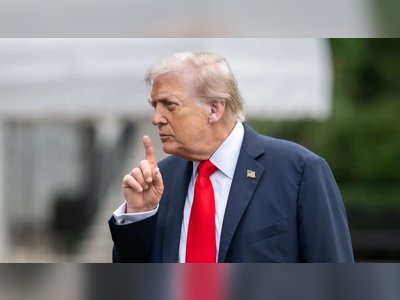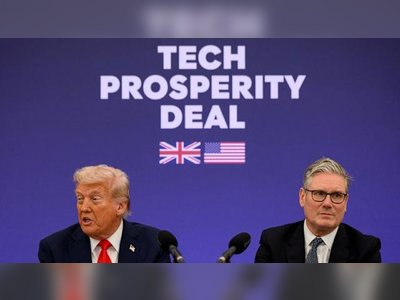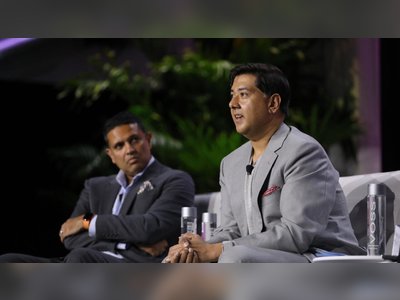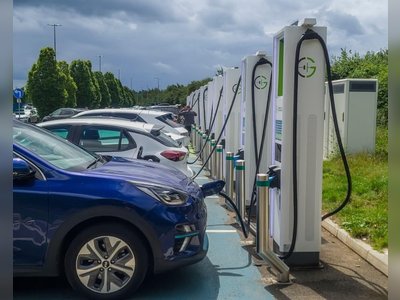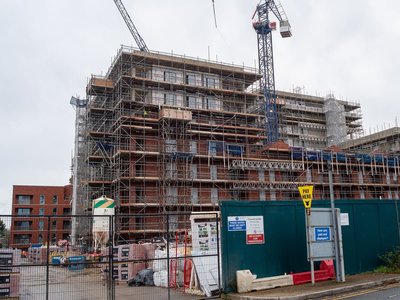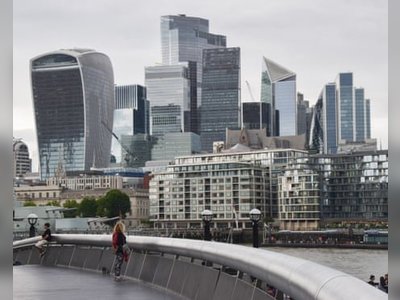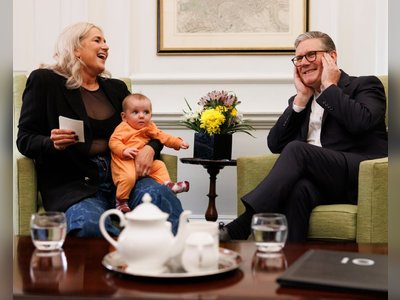China’s military seeks bigger budget amid growing threat of US conflict
This is the fourth in a series of 10 stories examining the issues Chinese leaders face as they gather for their annual “two sessions” of the National People’s Congress and Chinese People’s Political Consultative Conference this week. This story looks at the expectations for and the implications of China’s new military budget.
China’s military leaders are fighting for a substantial increase in their budget to be announced at the National People’s Congress that starts on Friday, arguing that the world’s largest standing army needs more resources to cope with volatile challenges at home and overseas. But top of the list is the growing confrontation with the US.
China-US relations have hit a low point amid a trade war, spats over civil liberties and Taiwan, and conflicts over Beijing’s territorial claims in the South China Sea. Add to that accusations flying between Washington and Beijing about the origins of the Covid-19 pandemic and it is a toxic brew.
From Beijing’s viewpoint, the military threats are surfacing on its doorstep with US bombers running about 40 flights over contested areas of the South China and East China seas so far this year, or more than three times the number in the same period of 2019. US Navy warships have sailed four “freedom of navigation operations” in the area in the same period, compared with eight in all of last year.
“Beijing feels security threats posed by the US and other foreign countries are increasing, so the People’s Liberation Army wants a budget increase to support its military modernisation and combat-ready training,” said Song Zhongping, a Hong Kong-based military commentator and former officer in the PLA.
Although the actual size of China’s defence budgets are a matter of dispute, military insiders say the PLA will want to match or exceed last year’s 7.5 per cent growth rate – with one estimating a 9 per cent jump – as tensions escalate on several fronts, including the perennial Taiwan friction.
While those spending growth estimates may not seem outlandish, they would be against a backdrop of a domestic economy severely hammered by the Covid-19 outbreak and the threat of a global recession. In late March, investment bank China International Capital Corporation slashed its real GDP growth forecast for China in 2020 to 2.6 per cent from 6.1 per cent in January.
China announced defence spending of 1.18 trillion yuan (US$176 billion) at the NPC in March 2019, which is the world’s second largest. But the Stockholm International Peace Research Institute estimates China’s defence spending at US$261 billion, which is a little over a third that of the US$732 billion of the US.
Lu Li-shih, a former instructor at the naval academy in Taiwan, said the suspicion between Beijing and Washington was the worst since the resumption of diplomatic relations in the 1970s, but he rated the chance of a military conflict as low.
Collin Koh, a research fellow at the S. Rajaratnam School of International Studies at Singapore’s Nanyang Technological University, meanwhile, said the PLA and US military counterparts had communication channels.
“Bilateral military ties … might not be always efficacious, but at least do serve as existing ‘pressure valves’ to forestall and potentially mitigate the risks that arise from growing tensions between Beijing and Washington,” Koh said.
Still, President Xi Jinping, who chairs the all-powerful Central Military Commission, ordered the PLA on January 2 to boost its combat capacity as relations worsened with Washington. That was a repeat of Xi’s “be ready to win wars” order when he laid out his military expansion plan to the Communist Party’s national congress in 2017. The message has not changed.
Neither has the focus of attention: Taiwan. In last July’s defence white paper, the PLA said two of its most challenging threats were from pro-independence forces in Taiwan and separatists in Tibet and Xinjiang, saying the army “will defend national unification at all costs”.
Ni Lexiong, a specialist in China’s naval strategy and former professor at the Shanghai University of Political Science and Law, said under President Donald Trump, US arms sales to Taiwan – including 66 F-16 Viper fighter jets – gave the PLA additional bargaining chips in asking for more money.
Beijing considers Taiwan a part of China’s territory that must be returned to the mainland fold, by force if necessary. The PLA has planned for such an event since 1949, when the Nationalist Party was defeated in the Chinese Civil War by the Communist Party of China and fled to the island.
Tensions over Taiwan have ratcheted up since Tsai Ing-wen became president in 2016. She was re-elected in a landslide in January on a platform of standing up to Beijing and defending Taiwan as a liberal democracy. She will be inaugurated for a second four-year term on Wednesday, just two days before the NPC opens.
‘More sabre-rattling’
Alexander Huang Chieh-cheng, a professor of international affairs and strategic studies at Tamkang University in Taipei, said that while a military conflict between the mainland and Taiwan would be unlikely in the coming two years, as Beijing needed to concentrate its efforts on economic recovery after the Covid-19 pandemic, the risk of conflict had increased.
“Beijing is expected to continue its sabre-rattling against Taipei, staging more war games to try to intimidate the Tsai government in her next four years in office as long as she rejects the 1992 consensus,” Huang said, referring to a decade-old agreement between Beijing and Taipei to define cross-strait relations. Huang was a former vice-chairman of Taiwan’s Mainland Affairs Council which oversees the island’s policies towards the mainland.
China has been running increasing numbers of military flights into Taiwan’s airspace, and in recent media articles some retired Chinese military officials have suggested that the US was not in a position to defend Taiwan because all four of its aircraft carriers in the Indo-Pacific had been hit by Covid-19 outbreaks. Later comments in an influential party journal, the Study Times , suggested a military venture was not part of Beijing’s immediate plans.
“The Covid-19 pandemic has exacerbated suspicions and mistrust between Beijing and Washington, and likewise between Beijing and Taipei,” Ni said. “China is facing a new round of containment posed by the US-led Western countries similar to the Cold War.”
Xi’s national rejuvenation strategy for China includes reshaping the PLA into a top-ranked fighting force by 2050, which includes launching at least four aircraft carrier strike groups by 2035, cutting-edge weapons research and development, and revamping the whole military command structure.
China now has two aircraft carriers; the Liaoning is a refitted vessel bought from Ukraine, while the Shandong is the first domestically built. The Shandong is still undergoing sea trials to meet what is known as initial operating capability, or IOC, for warships.
The navy has scheduled sea trials for two newly launched Type 075 helicopter docks, a type of amphibious vessel, with 40,000 tonnes of displacement. It also has plans for eight Type 055 guided-missile destroyers, its most powerful warship and among the most advanced in Asia. The first was commissioned in January and three others are being fitted out.
The PLA modernisation of both traditional and non-traditional military operations would not slow, said Song in Hong Kong. The PLA is also arguing for more funds, citing other complicated and non-traditional security challenges at home, from separatism to terrorism and religious extremism.
Fighting the pandemic
China’s military also found itself at the forefront of a different battle this year as tens of thousands of personnel were drafted into the fight against the Covid-19 disease outbreak in the initial epicentre, Wuhan, in January. The PLA provided doctors to treat patients, as well as soldiers and logistics for quarantine lockdowns, all additional expenditures that affect short- and long-term planning.
Beside fighting pandemics, the military is also expected to do its part in providing jobs for the rising ranks of unemployed as businesses struggle to recover from the economic damage done by the disease.
More than 8.7 million students will graduate this summer and the PLA has been asked to absorb more of them, another reason to request more funding.
A military insider said the Covid-19 pandemic added a large, unexpected financial burden on the PLA.
“Military leadership is still fighting with the decision makers of the NPC for a budget increase up to 9 per cent for the coming year, even though the global and domestic economic situations are worrying,” said the person, who requested anonymity due to the sensitivity of the talks.
The PLA deployed more than 4,500 military medical personnel to worst-hit Hubei province and its capital Wuhan, as well as other logistic support elsewhere in the province from February.
“President Xi also ordered scientists from the Academy of Military Medical Sciences to join the global race to find a vaccine for Covid-19, which is a long-term and costly investment,” the person said. “It’s very difficult to predict the military cost from the Covid-19 pandemic, because we don’t know how long it will last.”




